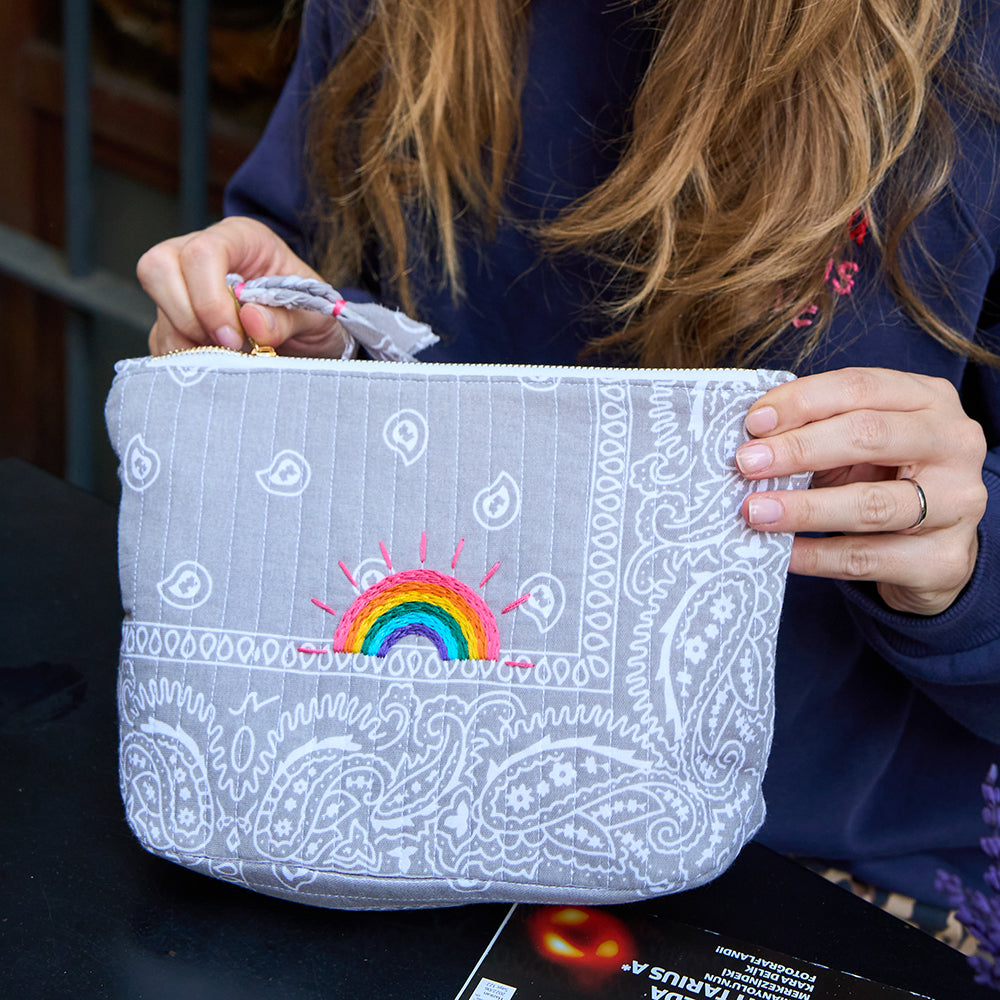Madrid, as the vibrant capital of Spain, offers a wide range of experiences, from art and culture to sports and gastronomy. World-renowned art galleries such as the Prado Museum and Reina Sofía showcase the city’s artistic richness, while vast green spaces such as the Retiro Park bring a natural breath of fresh air to city life. Offering the best of Spanish and international cuisine, Madrid is also a magnet for sports fans, home to football giants such as Real Madrid and Atlético Madrid. Where history and the modern intertwine, Madrid offers stories worth discovering at every corner.
Festivals in Madrid
Madrid adds colour to the city's cultural life with various festivals held throughout the year. These festivals offer a wide range of experiences, from music to art, from traditional celebrations to modern events:
Dos de Mayo
This festival commemorates the beginning of the Spanish War of Independence on May 2, 1808, and is marked by huge celebrations in the Malasaña and La Latina districts of Madrid. It's an event filled with street art, live music, and traditional food.

San Isidro
Held every May in honor of Madrid’s patron saint, San Isidro, this festival is the city’s biggest celebration. Featuring traditional costumes, bullfights, concerts and fireworks, it’s an unforgettable experience for Madrid residents and visitors.

Madrid Orgullo (Madrid Pride)
Held in late June and early July, this festival is one of the largest LGBT+ celebrations in Europe. With colourful parades, concerts and parties, the city celebrates diversity and equality.

Villa Veranos
Held in various locations throughout Madrid throughout the summer, this festival offers open-air concerts, theater performances, dance shows and movie nights.
Fiesta of Almudena
Held on November 9th, in honor of another patron saint of Madrid, the Virgen de la Almudena, this festival is celebrated with religious ceremonies, flower offerings, and traditional music.

Transportation from Madrid Airport to City Center
Madrid-Barajas Adolfo Suárez Airport is located approximately 12 kilometers from the city center and offers a variety of transportation options for visitors to Madrid:
Metro: One of the most economical and practical ways to get from the airport to the city center is to use the metro. You can reach Nuevos Ministerios station using the pink line number 8 and transfer to other lines from there.
Express Bus Line: The express bus line, which provides direct service from the airport to Atocha Train Station and Cibeles, operates 24 hours a day. These buses transport passengers to various important points of the city.
Cercanías Trains: From the airport's Terminal 4, Cercanías trains (lines C1 and C10) provide fast access to the city centre and other major stations.
Taxi: Taking a taxi from the airport to the city centre is the quickest but usually most expensive option. Taxis in Madrid operate on fixed fares, making the cost transparent and predictable.
Car Rental: There are many car rental companies at the airport. If you want to explore Madrid at your own pace, you can rent a car.
Private Transfer Services: By making a reservation in advance, you can have a direct transfer from the airport to your accommodation with private vehicles or shuttle services.
Places to Visit in Madrid
Madrid is full of tourist attractions, from art galleries to historical sites, from green parks to lively squares. Here are some of the places to visit in Madrid:
Prado Museum
One of the most famous art museums in Madrid and the world, the Prado houses works by Velázquez, Goya, El Greco and other famous artists. It is a must-visit for art lovers.

Reina Sofia Museum
The heart of contemporary art, this museum houses important works of 20th-century art, including Picasso's famous "Guernica" painting.

Retiro Park
One of Madrid’s largest parks, the Retiro offers a peaceful escape. You can take a boat ride across its pond, watch street artists perform, and stroll through the beautiful gardens.

Plaza Mayor
Madrid's historic square is a popular meeting point for various festivals, events and markets. It's fun to sit and people-watch in the cafes and restaurants surrounding the square.
Royal Palace (Palacio Real)
Madrid's stunning Royal Palace is the official residence of Spain's kings, but is open to the public except for important events. The palace's magnificent rooms and gardens are among the sections open to visitors.

Gran Via

Gran Vía, Madrid's most famous street, is full of shopping, theatre and historic buildings. Lively at all times of the day, it feels the pulse of the city.
Puerta del Sol
The Puerta del Sol, the central point of Madrid and a popular meeting place, is one of the busiest squares in the city. A famous place for New Year's celebrations, it also hosts various shows and events.

What to Eat in Madrid
Tapas
An integral part of Madrid's food culture, tapas are a variety of snacks served in small portions. Patatas bravas, gambas al ajillo, and jamón ibérico are popular tapas options.

Cocido Madrileno
This traditional dish from Madrid is prepared by slowly cooking chickpeas, meat and vegetables for many hours. It is a warming option on cold winter days.

Calls from Madrileña
This is a Madrid-style tripe dish that you can find especially in traditional Spanish restaurants. It is ideal for those looking for a spicy and delicious taste.

Bocadillo de Calamares
This sandwich, consisting of fried calamari rings sandwiched between baguette bread, is a popular snack on the streets of Madrid, especially around Plaza Mayor.

Churros with Chocolate
Madrid is a great place for churros, served for breakfast or as an afternoon snack. These fried dough sticks are eaten dipped in hot chocolate.

Tortilla Española
Also known as the Spanish omelette, this dish consists of potatoes, eggs, and onions. You can find it on any restaurant or bar menu.

Sangria
A traditional Spanish drink that you can drink with meals or tapas in Madrid. It is made with a mixture of red wine, fruit, a little sugar and sometimes liqueur.

Madrid Nightlife
Madrid is known for being one of the most vibrant cities in Europe with a nightlife. The Spanish habit of eating and partying late makes the city's nightlife particularly dynamic. Here are the highlights of Madrid's nightlife:
Tapas Bars: An essential part of Madrid nightlife, tapas bars are popular from the evening hours until late at night. You can experience Madrid's social life with a few glasses of sangria or local beer while tasting a variety of tapas.
Clubs and Discos: Madrid has clubs and discos to suit every musical taste. Areas like Gran Vía and Sol are home to venues that offer a variety of music genres. Madridites often go out after midnight and party until the first light of dawn.
Live Music Venues: For fans of live music, Madrid offers a wide range of live music, from flamenco shows to jazz concerts. The Huertas district is known for its live music venues.
Flamenco Shows: Madrid is one of the best cities for authentic flamenco experiences. Venues like Tablao Flamenco provide unforgettable moments with passionate dance and music shows.
Night Tours: Night tours are also available to explore the historical and cultural sites of Madrid by night. These tours show another side of the city and offer a different experience.
Things to Know Before You Go
- Eating and Drinking Habits: Meal times in Madrid are later than in other European cities. Lunch is usually eaten between 14:00-16:00, and dinner after 21:00. Adapting to these times is important for a true Madrid experience.
- Siesta Time: During midday, especially between 2:00 PM and 5:00 PM, many shops and businesses may be closed for siesta. This can affect Madrid's circadian rhythm and your shopping or dining plans.
- Tapas Culture: Madrid is famous for its variety of tapas bars. Discover Madrid's gastronomy with a tapas tour in the evening and small tasty bites.
- Lively Late Nights: Madridites spend most nights out late. Restaurants, bars, and streets are lively late into the night, so expect to stay out late to experience Madrid’s nightlife.
- Free Museum Entry: Many Madrid museums offer free entry on certain days and times. Check these times when planning your trip so you can take advantage of this opportunity to explore Madrid’s rich artistic and cultural heritage.
We wrote about Madrid in this blog. We also recommend you to take a look at our article called Copenhagen Travel Guide . Mikos Store wishes you a pleasant day.







